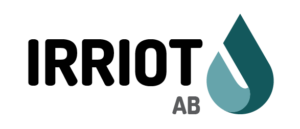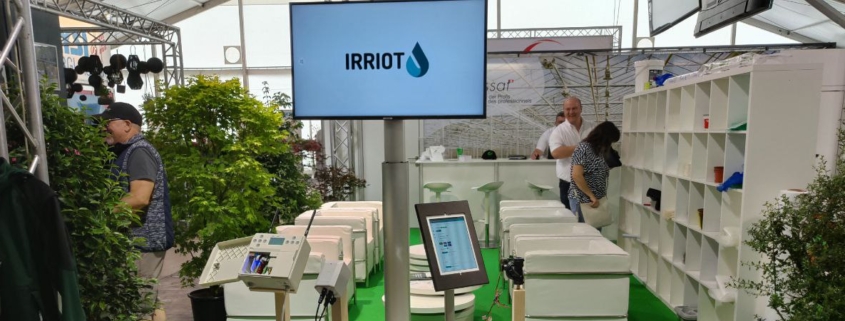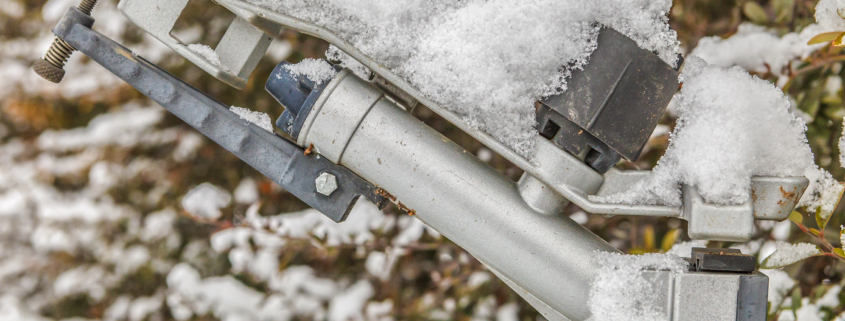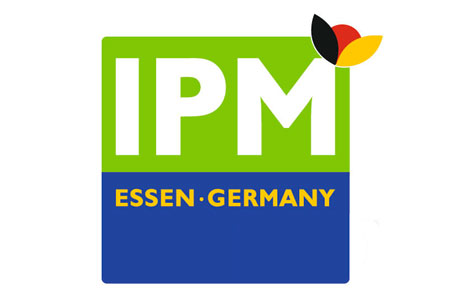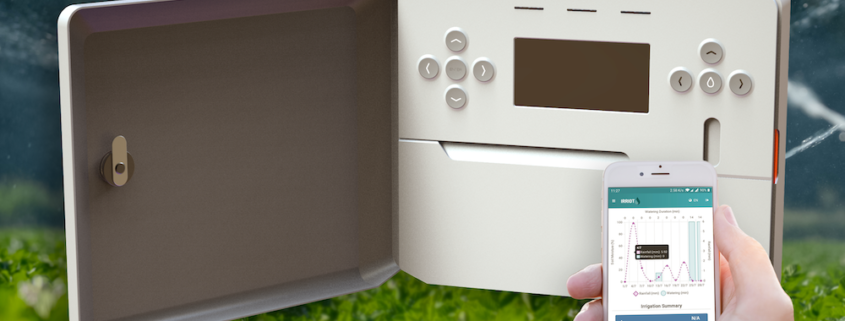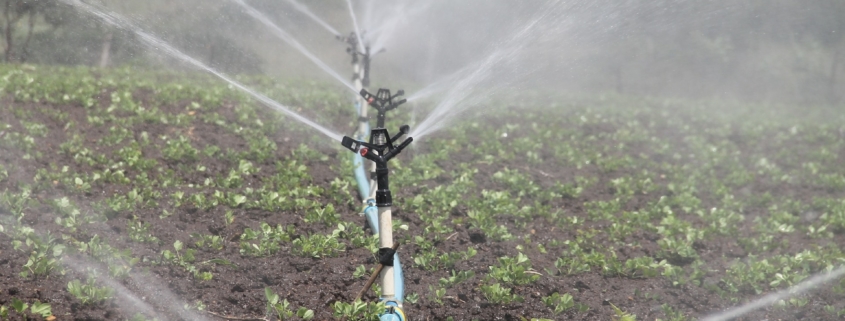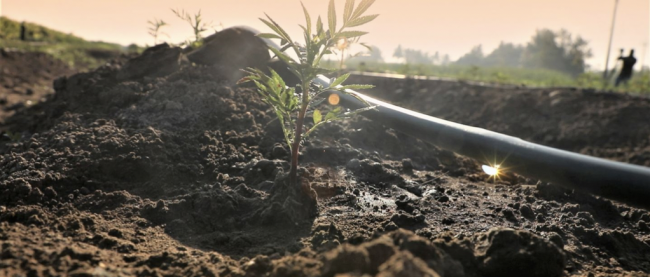Business Development Manager
Summary:
We are currently looking for a Business Development Manager based in western Europe. The primary objective will be to search for prospects for new business by building strong relationships with growers and new dealers. This position requires a substantial amount of travel.
Hi Mikhail, you are the technical manager for IRRIOT and have recently been involved in monitoring and supporting a number of customers who have started their irrigation automation for the spring.
Can you tell us a little about the different cultivations and how they differ?
– Yes, it is true that I have been involved in many installations during the spring. Everything from apple orchards, strawberry orchards and nurseries. Each cultivation is unique and the design of the irrigation systems varies – with it come different challenges, which I find extra rewarding.
We are currently looking for international pilot installations where we provide the irrigation automation equipment needed for manufacturing cost. If this would be of interest to you please read more below and contact us here!
Read moreIrrigation is to many people a daily chore and there are more or less convenient times during the day when this could be done.
7.7 billion people, that is the world’s population today and by the middle of the century the Earth’s population is expected to hit nine billion, with more than half of that growth taking place in Africa.
Feeding this growing population won’t be easy. 12 years ago a scientists reckoned that the global food system will need to produce more food in the next 50 years than it did in the past 10,000 combined.
Over 33% of us are facing water scarcity today and by the year 2025 that figure may rise to 67%.
Did you know that 70% of global water withdrawals are done by farmers and this is where we find the greatest water wastage?
Smart irrigation systems are becoming increasingly popular among homeowners and farmers due to the many benefits they provide. A smart irrigation system is programmed remotely to turn on or off the water flow when it detects a problem. This helps prevent water waste, reduces water bills, and helps save the environment at the same time.
If you’re a landscape gardening fan or a full-time farmer and have been spraying your darling shrubberies and crops with manual hose pipes, stop here and now. We all understand that our beloved earth is running out of usable water and we are to be blamed for it.
It is estimated that around 70 percent of the drinkable fresh water on earth is utilized by the irrigation sector, of which about 50% is wasted because of conventional, worn-out farming practices. From landscape gardeners to farmers and conglomerates, everyone is doing their part in the calamities bound to be thrust unto humanity. Manual farming is and will hurt our civilization with droughts, flash floods, and whatnot in the not-so-far future if not heeded with skill and technology.
The United States alone wastes 50% of its drinkable water, which is 9 billion gallons per day. The traditional irrigation systems have led to enormous amounts of fresh water getting wasted in the seas. What is the solution? Smart irrigation systems are the answer to wastefulness and inefficient crop watering problems. With motored water pipes running on, overflowing lawns and fields when it’s least required, all that’s demanded is an efficient smart detection mechanism that waters plants when it is truly needed. This is where smart IoT-based smart irrigation technology comes into play.
The best irrigation system for your lawn or crop needs modern weather-based and soil moisture detection sensors that control the soil accordingly to the surroundings. Smart sprinkler systems are fully automated and controlled by sophisticated sensor technology.
These smart systems detect and control the surrounding soil conditions to water the garden more efficiently. When the temperatures reach a certain level, IoT-based sensors automatically increase the amount of water supplied to the surface. With the help of these smart sprinkler systems, you can avoid water wastage and save money big time.
Smart Irrigation Systems: How Does it Work?
Smart irrigation systems are the future of landscape gardening and crop watering practices. They come with an array of smartly automated features that allow managing your garden’s water supply more effectively.
The system comes with a controller that is integrated with the sensors and an app to manage the entire system. A smartphone or tablet is required to access the system through the app.
These smart irrigation systems come with multiple sensors to monitor the surrounding conditions such as soil moisture and temperature. The sensors provide feedback on the system’s performance, allowing you to schedule watering for the best time of day. It will automatically adjust the amount of water applied to your garden to save from over-watering the soil. This feature also saves you money and it’s a lot easier than trying to remember to water when it’s dry.
IRRIOT – IoT Irrigation Technology
The smart irrigation systems by IRRIOT aim to reduce water wastage, enhance crop yield, and make your garden greener than ever. The next-generation commercial-based smart irrigation control systems at IRRIOT will make your water supply efficient and reliable throughout the season.
All the sprinklers are wire-free and hence do not clutter or disconnect every time. IRRIOT systems run entirely on solar energy, which includes the central computer, sensors, motors, etc. With IoT-based communication systems for commercial lands, you can monitor and control everything from up to 5kms away with modern LoRa radio transmission. The return on investment is quickest and after you sign up for it, the rewards last a lifetime.
With the remote terminal units (RTUs), all the operations are processed wirelessly and via solar energy. The system latching mechanisms are carried on through electrically controlled magnetic valves and various weather- and soil-based sensors.
All the RTUs are designed to work in harsh environments and have rugged construction for the long-lasting life of the system. The smart irrigation system by IRRIOT is easy to set up, maintain, and operate. The user interface is designed with the most intuitive visuals and is suitable for both experienced and inexperienced users.
Irrigation is what made humans settle on earth. It was a eureka moment for our ancestors when they finally decided to quit hunting and gathering and embark on building civilization through farming.
That was because of the water that comes from the ground in the form of springs or above it in the form of rainfall and eventually flows through the soil. With it, a novel mode of survival was born. Art, philosophy, science, and sports, everything is indebted to humanity’s decision of cultivating the land and growing food out of it. Since the remote ages, irrigation has been an important source of human civilization.
The early civilizations used rivers for their needs, which were later replaced with artificial canals. The ancient Romans even built the first canal system in the world. Contemporary irrigation systems are semi- to fully automated, thanks to IoT-based systems.
Today, the global population stands at 7.68 billion and is expected to swell further in the coming decades. The population explosion coupled with the increased demand for food has led to a huge rise in the demand for freshwater as well. This demand has also resulted in the depletion of groundwater resources in many parts of the world. In order to meet this need, many new technologies are being developed to grow more crops with fewer water resources in hand.
Some of these technologies include desalination plants and water pumping systems. However, these have their own problems, such as the high cost and environmental impact. With groundwater vanishing out of proportion and surface water lowering to extents that are now causing droughts and flash floods worldwide, cutting-edge irrigation technologies are the only way out of the impending scenario of water and food shortages worldwide.
To meet the evergrowing food demand worldwide and the extremely acute water shortages ahead, modern methods have been valuable in putting a stop to unworthy conventional farming practices. Coupled with technology and assisted by science, the prospects are bright that the world can get away with the looming food security and water shortage crises.
Benefits of Modern Irrigation Systems
The benefits of having a modern, well-designed, and well-installed irrigation system are numerous.
- First, it is the most cost-effective way to get water on your crops.
- Secondly, a properly designed irrigation system will last for years without maintenance and can save you money in the long run.
- Thirdly, when used in conjunction with other types of crop rotation, it is the ideal tool to help avoid soil erosion.
- Lastly, the use of irrigation systems also helps in controlling weeds and insects.
The key thing is to have a reliable and sustainable water source that works for all seasons, especially during dry spells. A good irrigation system will make all the difference between the success or failure of your farming.
Types of Modern Irrigation Systems
Contemporary irrigation systems are strikingly similar to the farming practices adopted by early farmers. However, technology has been the dividing force that makes modern irrigation more rewarding and less labor-intensive. If you are ready to switch from age-old irrigation practices to modern ones that are inexpensive, labor-free, green, and clean, these are the four best irrigation systems for your crop.
1. Drip Irrigation System
With low maintenance costs and less pricey equipment, drip irrigation has been a successful practice for small and medium crop yielders. In water-scarce lands, drip irrigation is the most thriving mode of irrigation and has many advantages over outdated rainfall irrigation or the more expensive artificial subsurface irrigation methods.
The components of the drip irrigation method comprise a pipe network, nozzles, and a control head. The control head further includes a water pressure device, a filter, a water storage tank, and a water pump. The water is emitted through multiple emitters to the plant roots. A drip irrigation system eliminates the possibility of evaporation and water wastage.
In addition, it reduces the need for soil tillage and other labor-intensive activities. In short, the drip irrigation system is efficient in terms of labor-saving and low maintenance costs.
2. Artificial Subsurface Irrigation
In the artificial subsurface irrigation method, there are multiple pipes buried in parallel to maintain and distribute water flow below the ground. When water is passed through the pipe perforations by the pumping system, it only irrigates the roots instead of flooding the entire surface. This method also reduces evaporation and helps in obtaining higher crop yields for certain fruits and vegetables.
The upfront costs i.e., purchase, installation, and maintenance are far higher than drip irrigation. However, artificial subsurface brings more profit than any other irrigation system when applied to the right kind of crop.
3. Surface Irrigation
The modern surface irrigation system works on the same principles as the ancient rainwater collection and storage system. The major difference is that the water in the pipes is under high pressure, rather than being at atmospheric pressure, and is transported by pipes through electric pumps or turbines.
Surface irrigation systems are made up of a number of components, which are watersheds, pipelines, sprinkler heads, and water meters. The watersheds capture the rainfall from the land that they cover or the groundwater from wells through a water pump. The pipework then transports this water from the watershed to the sprinkler heads, where it can be distributed to plants, lawns, orchards, or other crops. The water meters measure the amount of water used by the individual users of the system.
3. Sprinkler System
The sprinkler system is one of the most efficient methods to water the fields without requiring an extensive labor force or energy. Sprinkler systems were invented a long time ago, and have been used in various forms ever since. They do the job by flooding the soil with water through the use of nozzles attached to an automatic timer or a manual one. The sprinklers can be installed on lawns, gardens, golf courses, parks, large swathes of agricultural land, or on a small ranch.
A few things make sprinklers work better than other types of irrigation systems, which are:
- They require less effort. The IoT-based automatic sprinklers require no labor work at all.
- They do not require constant power to operate; the solar sprinklers can run even if there is no electricity.
- They are very reliable and long-lasting. They emulate natural rainfall on the crop and deliver great results.
- They reduce the risk of water damage to the agricultural land and the crops on it. They work best on surfaces where there is insufficient water for the crop.
- They are very cost-effective in the long run and require low maintenance.
About IRRIOT
IRRIOT, founded in 2017, is a Swedish innovation company in the forefront of wireless intelligent irrigation solutions.
Irriot AB
P.O. Box 144
182 12 DANDERYD
SWEDEN
+46 70 232 02 64
info [at] irriot.com
Office Hours
Mon-Fri: 9:00-17:00
Sat: closed
Sun: closed
